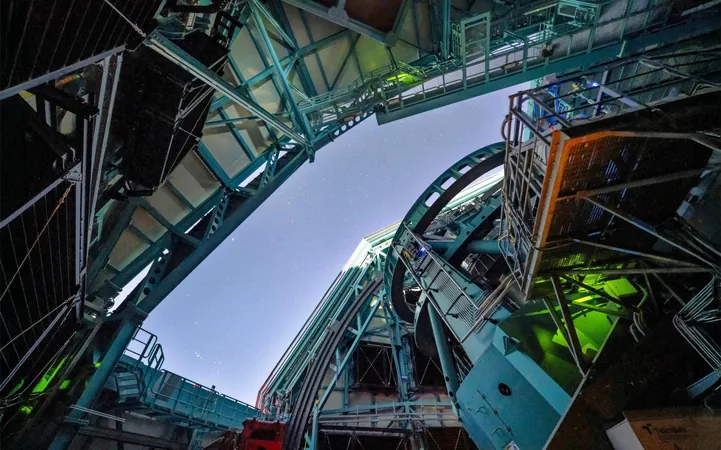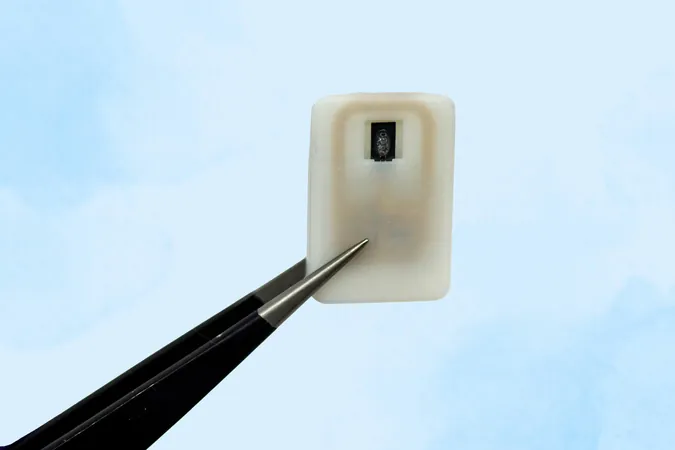
Get Ready for a Cosmic Revelation: Millions of Hidden Objects in Our Solar System!
2025-06-08
Author: Sarah
The universe is about to reveal its secrets! Astronomers are eagerly awaiting a monumental breakthrough this year, thanks to the groundbreaking Vera C. Rubin Observatory located in the pristine heights of Cerro Pachón, Chile.
This revolutionary facility is set to unveil a treasure trove of millions of previously hidden asteroids, comets, and minor planets, giving us an unprecedented view of our cosmic neighborhood.
The Technology Behind the Discovery
At the heart of this transformative mission is the Simonyi Survey Telescope, a massive 8.4-meter instrument featuring a cutting-edge three-mirror design. Coupled with it is the LSST Camera, the largest digital camera ever constructed for astronomical purposes. With a staggering 3.2 gigapixels and a field of view roughly 45 times the size of the full moon, this camera will revolutionize our gaze into the heavens.
Spanning a decade, the observatory will perform extensive scans of the entire visible sky, generating an astounding 20 terabytes of data each night. This will allow scientists to observe celestial dynamics like never before.
What Cosmic Wonders Await Us?
To forecast the flood of discoveries to come, astronomers have developed an innovative tool called Sorcha. This open-source simulator processes the observatory’s planned observation schedule, allowing scientists to predict how and what kinds of celestial bodies will be detected.
Meg Schwamb, a researcher leading this project, emphasizes the revolutionary potential of Sorcha. "It will not only tell us what we can find but also help us interpret these findings, expanding our cosmic knowledge at an unprecedented rate."
Unlocking the Solar System's Secrets
The solar system isn't just home to eight planets and their moons—tens of millions of small cosmic bodies reside within it. These icy detritus from the solar system's formation act like fossils, offering clues about the birth of our planets and even the emergence of water and organic materials on Earth.
As Jake Kurlander, a doctoral student at the University of Washington, notes, "It took 225 years of observations to catalog the first 1.5 million asteroids. Rubin will double that in less than a year!"
A Game-Changer for Planetary Defense
Rubin Observatory's simulations predict it will discover 127,000 near-Earth objects—more than three times our current count of 38,000. This includes over 70% of all potentially hazardous asteroids larger than 140 meters, significantly enhancing our capability to defend our planet.
Additionally, researchers expect to uncover over five million main-belt asteroids, exponentially improving our understanding of these celestial bodies.
Exploring the Ancient Cosmos
One intriguing target is the Jupiter Trojans—ancient objects sharing Jupiter’s orbit. Rubin may unveil an astounding 109,000 of these cosmic stones, vastly increasing our knowledge about the solar system's early history.
Even farther out, the observatory aims to detect 37,000 trans-Neptunian objects in the Kuiper Belt, providing invaluable insights into the formation and dynamics of our solar system's outer edges.
A New Era in Cosmic Observation
Not only will Rubin Observatory count small bodies, but it will also examine each one using different filters, revealing surface colors like never before. Joe Murtagh, a doctoral student, compares the advancements in observation to upgrading from black-and-white to vibrant color television.
Siegfried Eggl, an aerospace engineer, underscores Sorcha's critical role in managing the incoming data, stating it will transform our understanding of solar system history over billions of years.
Mark Your Calendars!
The Rubin Observatory is set to unveil its first public images during the highly anticipated "First Look" event on June 23. Full-scale scientific operations will commence later in the year.
Get ready for a cosmic revolution! With Sorcha and the LSST Camera at the ready, astronomers worldwide are bracing for discoveries that will redefine our comprehension of the solar system.


 Brasil (PT)
Brasil (PT)
 Canada (EN)
Canada (EN)
 Chile (ES)
Chile (ES)
 Česko (CS)
Česko (CS)
 대한민국 (KO)
대한민국 (KO)
 España (ES)
España (ES)
 France (FR)
France (FR)
 Hong Kong (EN)
Hong Kong (EN)
 Italia (IT)
Italia (IT)
 日本 (JA)
日本 (JA)
 Magyarország (HU)
Magyarország (HU)
 Norge (NO)
Norge (NO)
 Polska (PL)
Polska (PL)
 Schweiz (DE)
Schweiz (DE)
 Singapore (EN)
Singapore (EN)
 Sverige (SV)
Sverige (SV)
 Suomi (FI)
Suomi (FI)
 Türkiye (TR)
Türkiye (TR)
 الإمارات العربية المتحدة (AR)
الإمارات العربية المتحدة (AR)